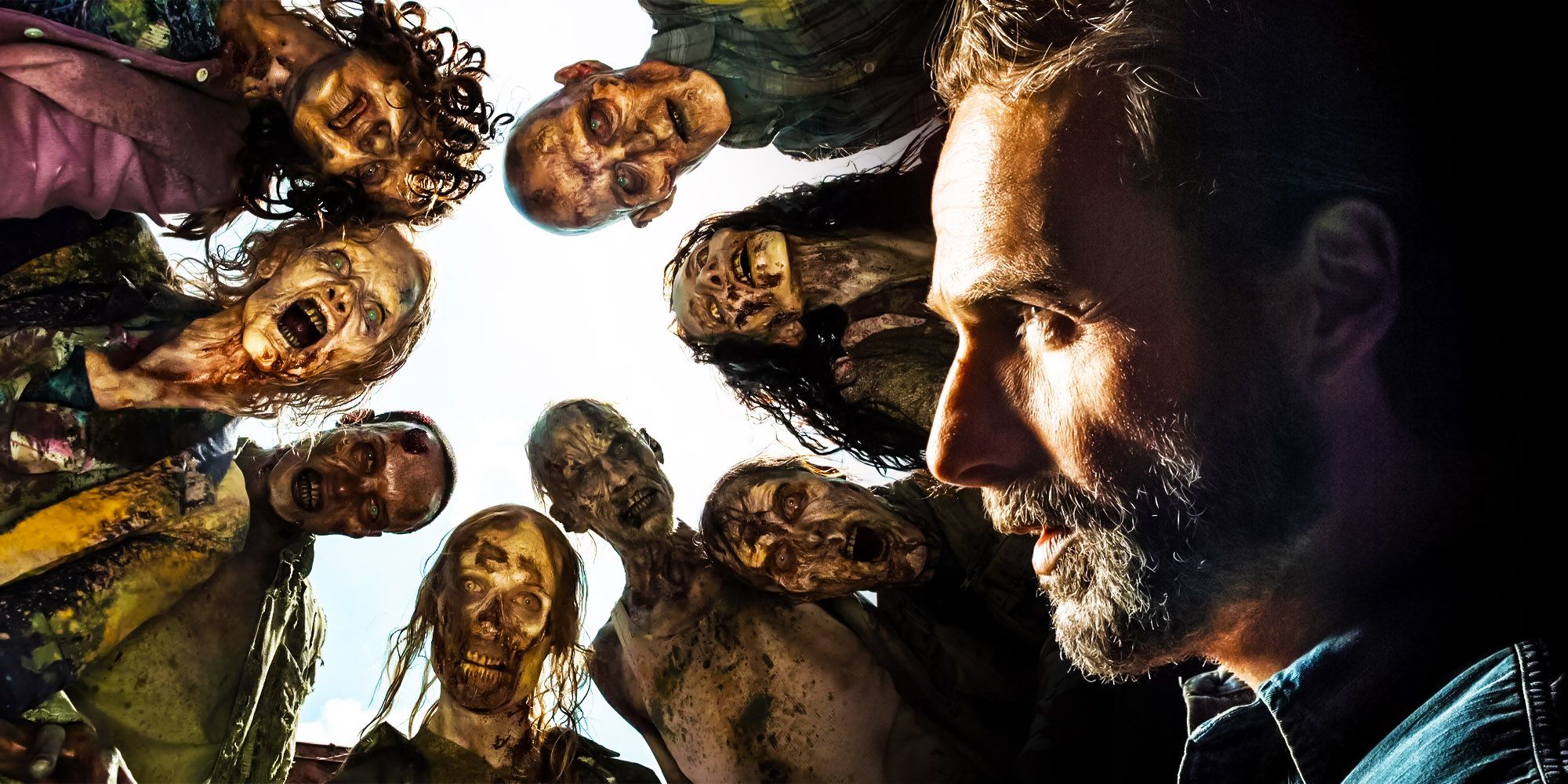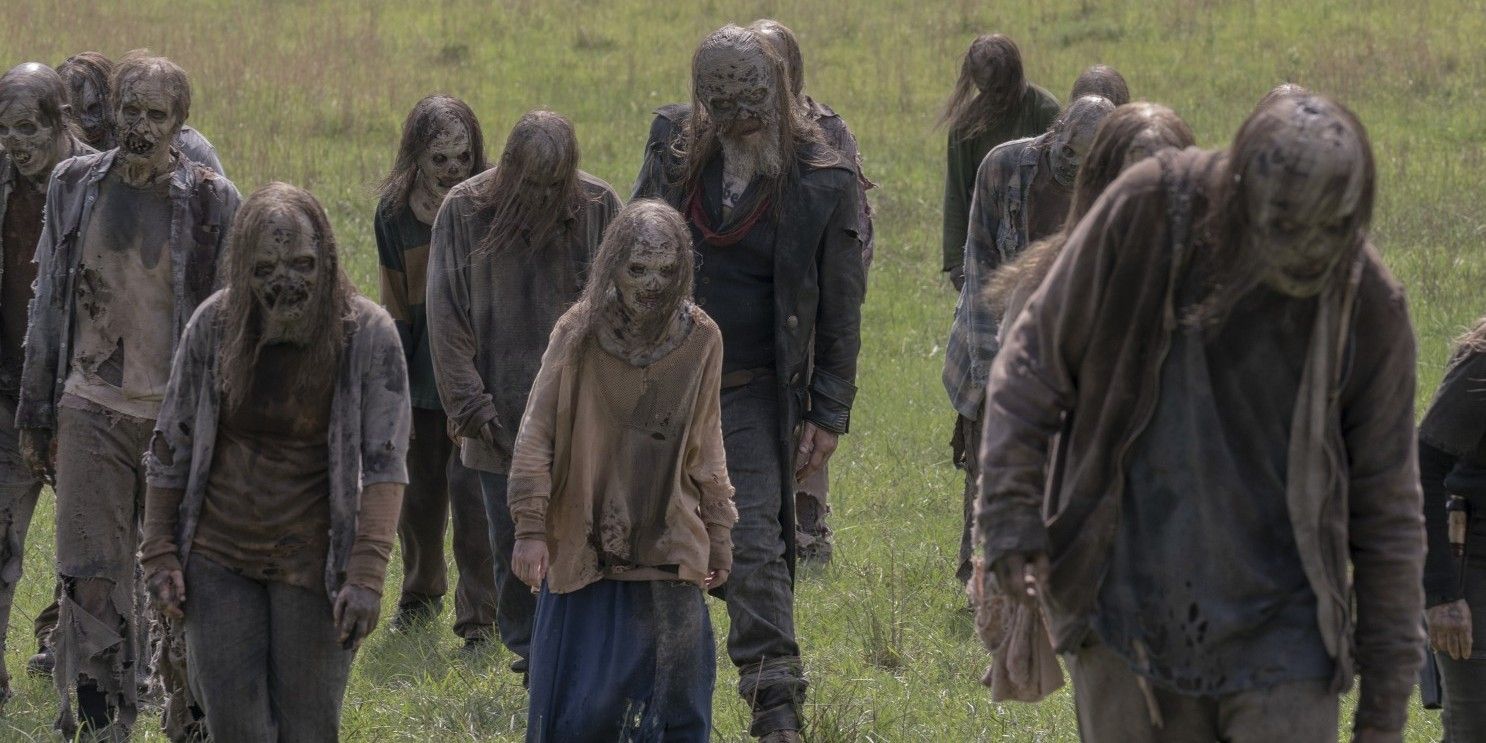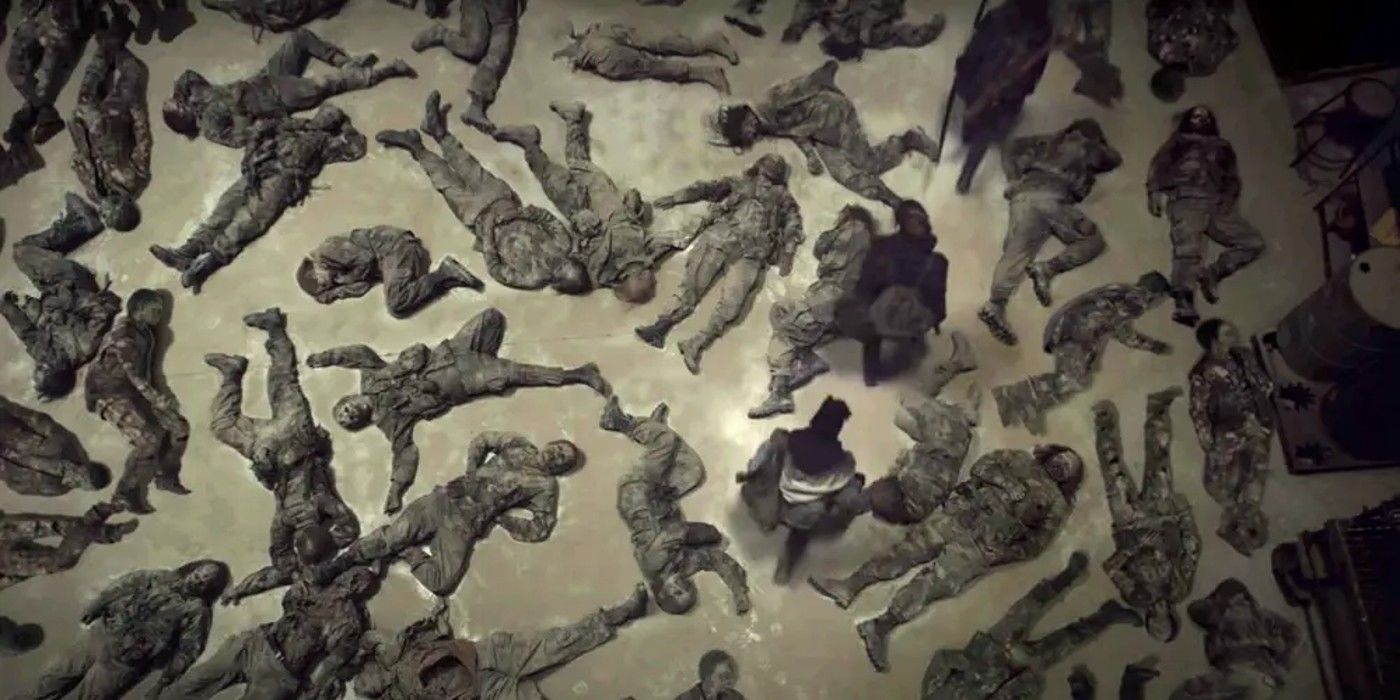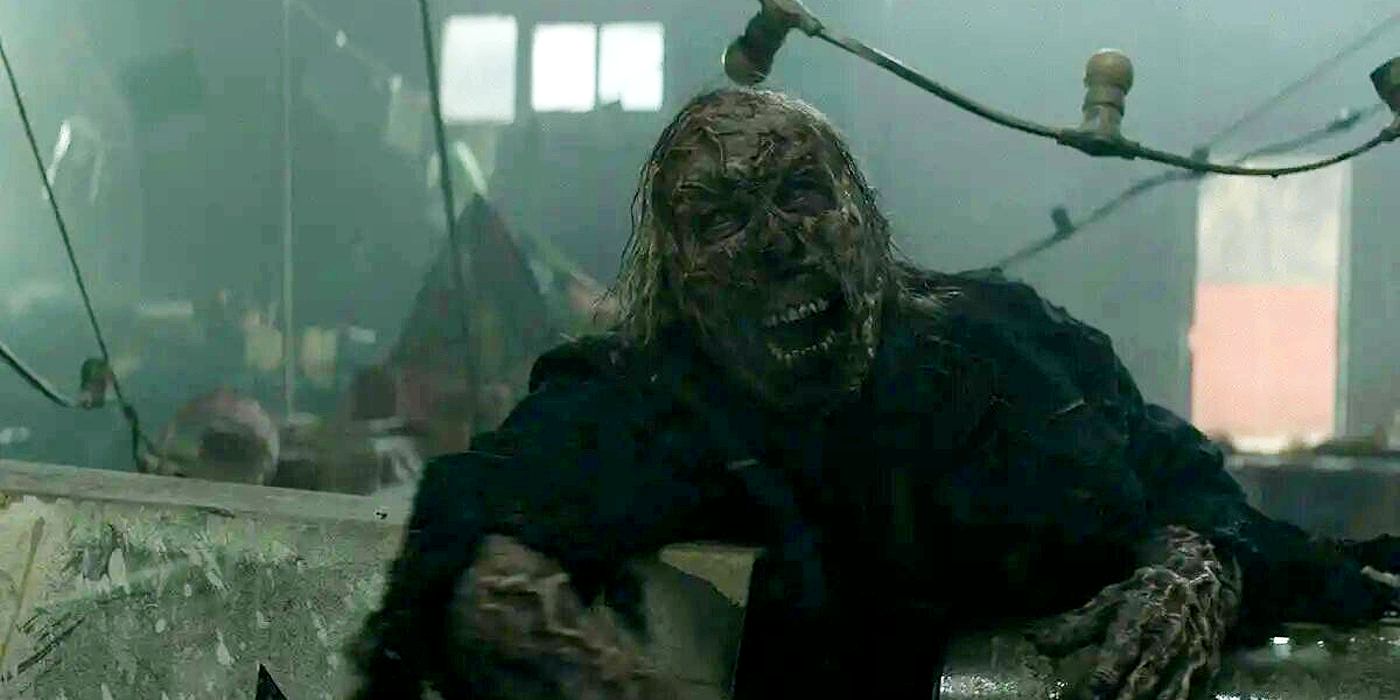Summary
- The Walking Dead features various types of zombies, including roamers, lurkers, and variants, each with their own distinct traits and behaviors.
- Roamers are the most common type of zombie, constantly on the move in search of food and often forming herds that pose a significant threat to survivors.
- Variants are a special type of zombie that possess unique abilities, such as increased speed, superior intellect, and potentially even acidic skin and blood. Their origin and evolution remain largely unexplained.
The type of zombies in The Walking Dead included various types that offer unique challenges to the survivors. While most zombies or "walkers" behave similarly, some variants exhibit different traits and abilities. Understanding the types of zombies in The Walking Dead provides insight into how the characters survive in this post-apocalyptic world. From the infection's behavior to how much movement reanimated corpses are capable of, The Walking Dead has constantly bent and sometimes totally rewritten its own rules in the name of narrative convenience.
Nevertheless, The Walking Dead and its spinoffs have subtly differentiated between types of zombies, both on TV and in comic books. The most common types of zombies in The Walking Dead simply follow basic instincts - to feed on living flesh. These walkers are reanimated corpses with limited mobility and cognitive function. While most zombies fall under the basic walker type, The Walking Dead suggests even more variant zombies may emerge. Understanding and classifying zombies helps the characters - and viewers - navigate the complex dangers in this apocalypse.

The Walking Dead's Daryl Dixon Cast & Character Guide
Led by Norman Reedus, The Walking Dead: Daryl Dixon spinoff sees a number of talented stars join the cast. But which characters are they playing?Roamer Zombies
The typical The Walking Dead zombie is almost certainly the roamer type. Roamers are far and away the most common zombie type in The Walking Dead - almost to the point where other strains are considered anomalies. Named as such because they constantly roam around in search of their next meal, roamers draw the most direct inspiration from George A. Romero movies. They're painfully slow, desperately unintelligent, and herd-like in their behavior. These zombies are also ceaseless when pursuing food, further justifying the name.
A Walking Dead roamer will keep trucking along until it sees, hears, or smells something that triggers an instinctive desire to feed, and it'll then give chase until the target is either lost or devoured. Due to their lack of intelligence and limited senses, roamers often collect into groups not-so-affectionately known as herds. These herds have a nasty habit of combining with other herds as they roam, creating the kind of massive zombie groupings that have assaulted Alexandria and other communities in The Walking Dead. Roamers are the biggest cause of zombie-related deaths in the United States.
The Walking Dead's zombie virus works in mysterious ways. Everyone has been infected with the virus and death is the trigger for turning, yet countless survivors become zombies after suffering even the smallest nibble from an undead denizen. The Walking Dead's official infection explanation is that bacteria from the zombie's mouth kills the victim and then reanimation commences, rather than any viral load actually transmitted via the bite itself. The logic is iffy at best, especially given the amount of times Rick and his friends cover themselves in zombie guts, but it means roamers aren't spreading the virus, despite their prevalence.
Lurker Zombies
The Walking Dead's distinction between roamer zombies and lurker zombies is more pronounced in the comic books than in the AMC TV series, but the line - however blurred it may be - has been demonstrated in both. As the name implies, lurkers stay in one place rather than roaming around. They still feel the urge to eat, but instead of actively seeking out food by moving around, they lazily wait for food to come to them, only attacking when stirred. In Robert Kirkman's original Walking Dead comics, lurkers ignore survivors that aren't within immediate reach, but because they're usually silent and hidden, they're arguably more dangerous than roamers.
Indeed, it's a lurker that claims Hershel's leg in the comic books, slithering out from its unseen hiding place to bite the unsuspecting farmer's ankle. Lurker zombies manifest a little differently in The Walking Dead's TV adaptation - the most obvious example being the "sleeping" zombies from The Walking Dead's season 11 premiere. A team of protagonists lowers themselves into a room covered in zombies that aren't moving or trying to eat them. The group scavenges for supplies and almost escapes without waking the dead beneath their feet, but a drop of blood proves enough to spur the lurkers into action.
Lurkers were also prominent in The Walking Dead: World Beyond, becoming increasingly common as the outbreak progressed. Despite the separation between roamers and lurkers, there's no evidence to suggest one type can't transition into the other. Eugene theorizes as much in the Walking Dead comic books, and although the zombie virus hasn't been explained clearly enough to be sure, it's possible that an unstimulated roamer eventually becomes a lurker, and a stimulated lurker can become a roamer. Because of this fluidity from one side of the undead fence to the other, the "roamer" and "lurker" tags are perhaps more accurately described as states than inherent groupings.
Variant Zombies
If roamers and lurkers are closely related, variant zombies are a different beast entirely. Original to The Walking Dead's TV series, variants began as something of a happy accident, as when the AMC adaptation was still finding its feet in season 1, The Walking Dead's zombies could move quickly, pick up weapons, and open door handles. These advanced attributes were quickly phased out in favor of the more traditional roamers and lurkers, never to be mentioned again until The Walking Dead: World Beyond season 2's post-credits scene, that is.
According to a video left by Dr. Jenner, "variant" zombies were detected in France during the earliest stages of the outbreak, although, as mentioned previously, some (like Morgan's wife and the child zombie Rick kills in episode 1) were present on U.S. shores too. The Walking Dead season 11 brought zombie variants to the fore, which suggests they're growing in number over time. The Walking Dead hasn't yet explained why variants happen, or if a regular zombie can evolve into a variant. The transformation could be triggered by a different pathogen altogether, or the variants might evolve naturally from roamers and lurkers.
The Walking Dead: World Beyond's post-credits scene did at least offer one hint. The research team that caused the outbreak apparently "made it worse" afterward, implying variants might've been the accidental result of a misguided attempt to halt the outbreak. Zombie variants have shown an array of special skills since appearing in The Walking Dead. Many of them move faster than roamers - not quite a run, but enough to catch someone escaping. Zippy zombies include the little girl from episode 1, the French scientist from The Walking Dead: World Beyond, and some Commonwealth zombies from season 11. Plenty of variants seem to possess superior intellect and memory retention.
The dead French scientist still knew where the door to her lab was even after reanimation, Morgan's wife tried to open her own front door, and Aaron speaks of zombies climbing fences in The Walking Dead season 11. Though not quite as clear-cut, some zombie variants might also possess super-strength. When the French scientist hammers on a metal door in the final moments of The Walking Dead: World Beyond, her fists leave a visible imprint upon the heavy blast door - surely a feat even human hands couldn't manage.
Burners
The France situation started to play itself out in The Walking Dead: Daryl Dixon. When Daryl woke up in France, he had no idea how he got there and his only thought was figuring out a way back home. However, he encountered something he had never seen before. It was also strikingly different from the types of zombies in The Walking Dead to that point. These are Burners, and they are known for a special power no other walker has. The Burners on The Walking Dead have acidic skin and blood. It seems The Walking Dead: World Beyond's post-credits scene might be about more than just creating fast variants.
The Walking Dead: World Beyond's post-credits scene indicates scientists there tried to isolate the walker problem and find a way to kill them. However, it looks like the experiments did something different. The Burners didn't die, but their blood and skin can severely burn anyone they touch, similar to the acidic blood of Xenomorphs in the Alien franchise. These are not the variants that are faster, stronger, and more intelligent, though. Instead, they are more like Roamers, except with the deadly addition of burning anyone they touch. This happened to Daryl in an unexpected moment in the season premiere.
While the idea is that the scientists in France who "made everything worse" helped create the Variants and Burners, there might be another explanation as well. The Burners that Daryl encountered at the time were in a food processing plant. There is the thought that it could be something these Roamers consumed that turned their blood into acid. These Burners showed back up in episode three where Daryl used a Burner to burn away overgrown vines so he and Isabelle could escape. This also isn't likely the last of the types of zombies in The Walking Dead, as it appears The Cause continues to make them even more dangerous for the future.





